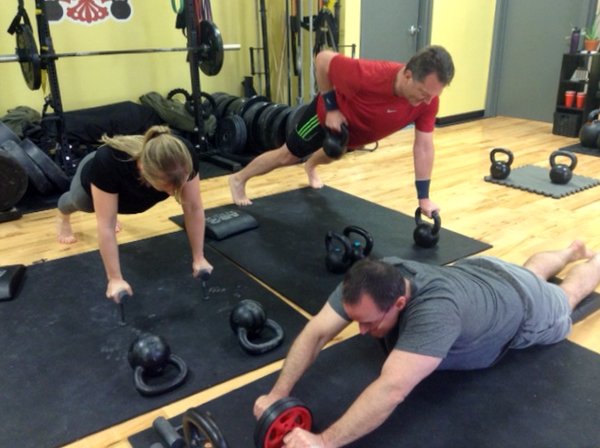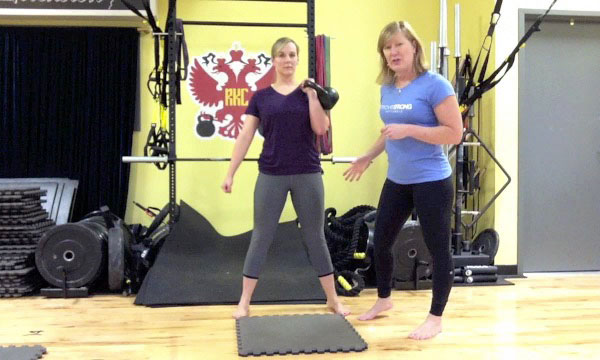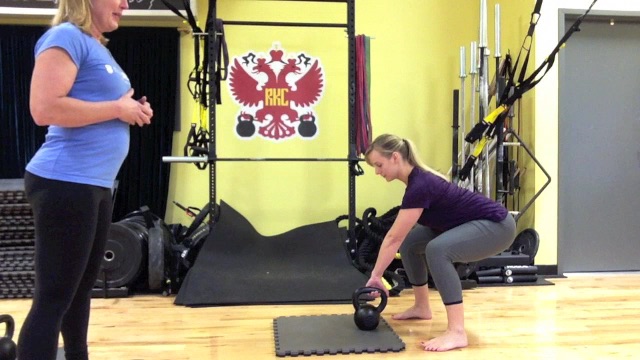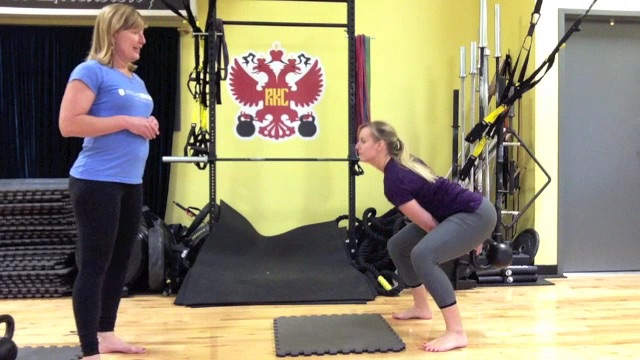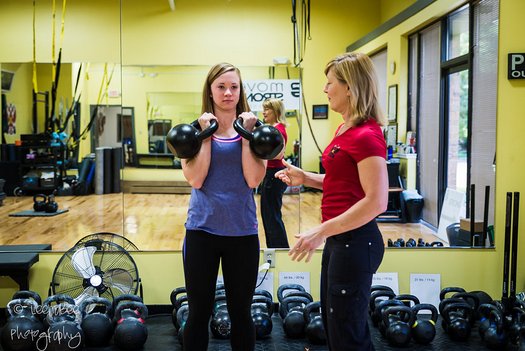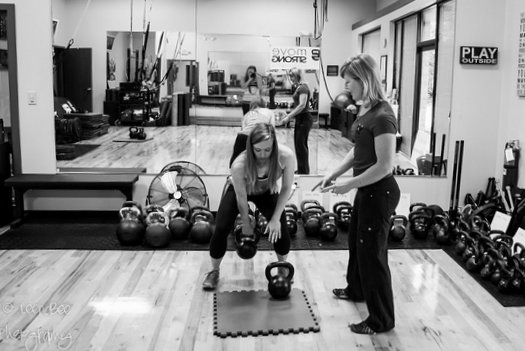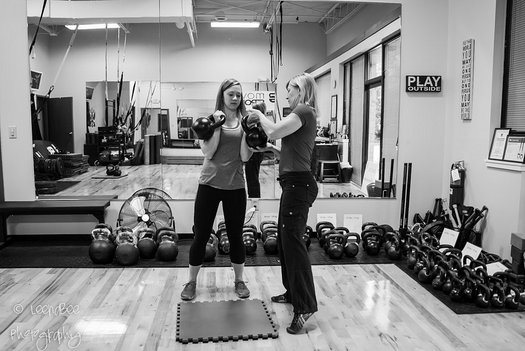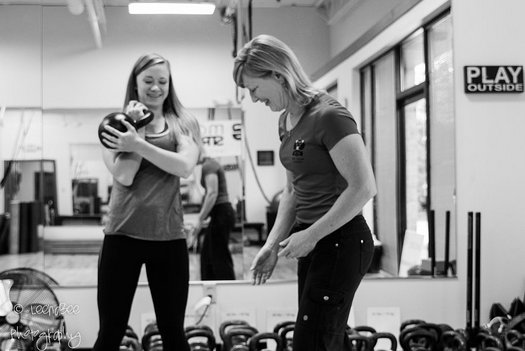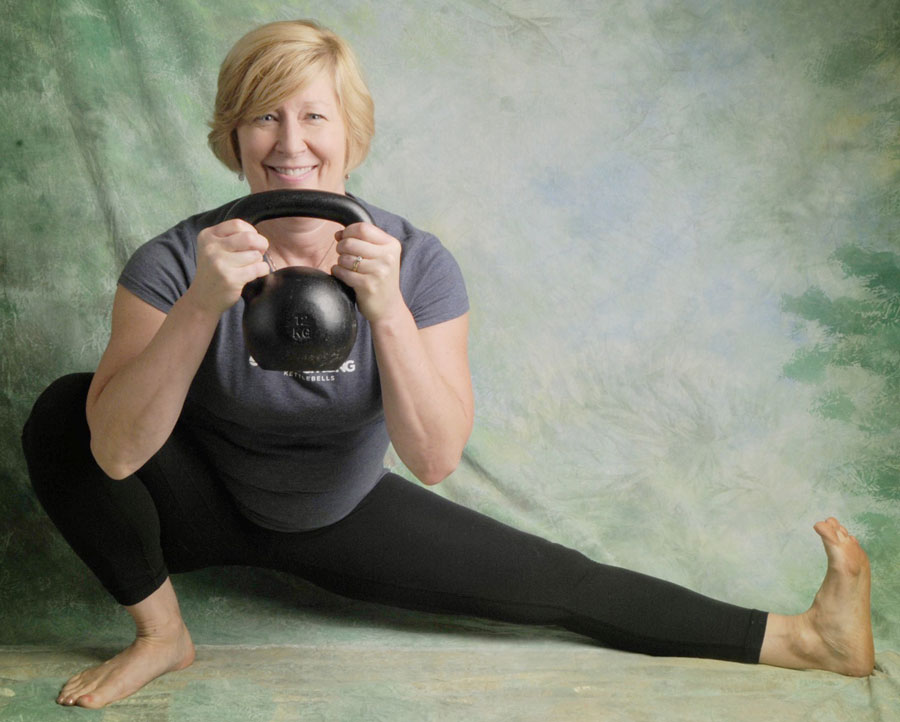
Every Spring, I enjoy looking back and reflecting on what I am grateful for over the last year. One of those things is the RKC School of Strength and my students who enjoy using kettlebells as much as I do.
As I reflect on seven years of teaching strength and conditioning (and a dozen certifications and workshops later) I can honestly say that what has prepared me best to be a strength coach is the RKC School of Strength.
Here’s why: I don’t have to struggle to plan programming for my students. It’s all here—a way to train students to become stable, mobile, strong and flexible for life. This system is safe, interesting to the mind and body, and accessible to all fitness levels. It’s fun, time-efficient and truly a system of health that promotes longevity.
I’m grateful for my students who keep coming back for more…
At my gym, our programming is 80% kettlebells and 20% bodyweight. It’s based on both the RKC and PCC (Progressive Calisthenics) fitness systems.
Many of the students have been training with me since the beginning of my kettlebell journey more than five years ago. They keep coming back for more because the RKC School of Strength challenges both the brain and the body.
I find that students can continue to train this way for life. We can easily adapt the training to their changing personal health and fitness levels. Wherever my students are in the moment—and this true for D1 athletes, everyday working folks, or retirees—they can train optimally.
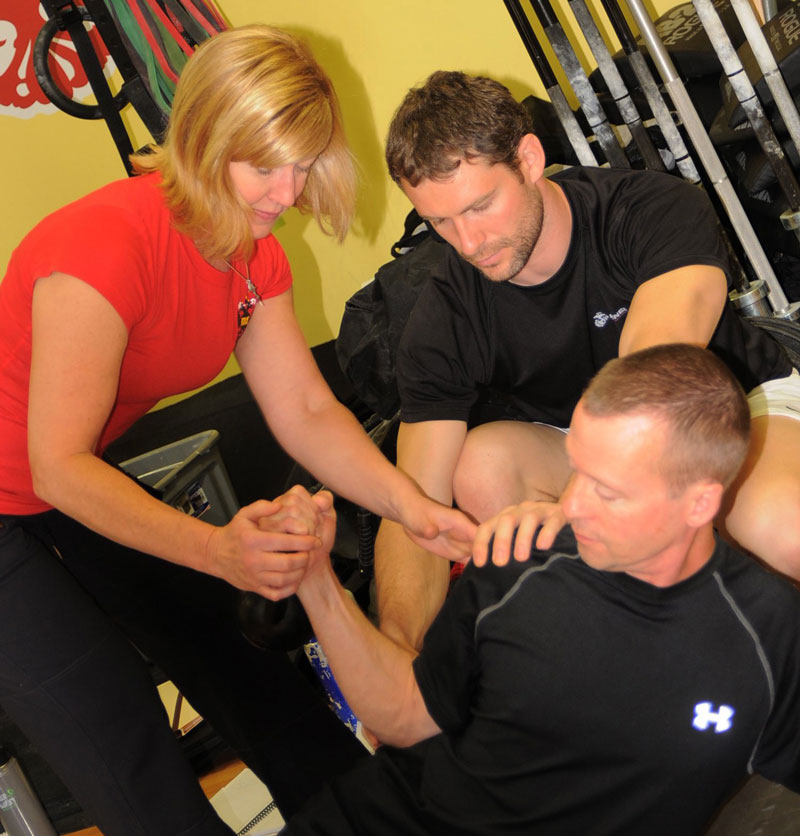
The RKC system is inexhaustible—there’s always more to learn about our bodies, the movements, and kettlebells to make us better for life and sport.
The physical and mental stimulation from our training applies to everything we do: lifting, carrying, reaching, bending, sitting, getting up and down off the floor, standing, walking, running and resting. All aspects of our lives can benefit from what we learn about our bodies using the RKC system.
We do not entertain our students with workouts. The challenge of moving well under load is entertaining in itself.
Our system is a way, not a workout. Those who understand this concept can’t get enough of it! I feel blessed and grateful to retain so many students for years.
I’ll be honest. It can take time to find people who appreciate our somewhat “counter-culture” methods. We don’t promise visible abs in six weeks or make other outlandish marketing claims.
First and foremost, the student has to show up and work under the leadership of an RKC certified coach. Both parties—the coach and the student—must make a commitment to see results.
Students who commit to learning our methods stay and flourish. As a teacher, it’s exciting and incredibly rewarding to build long-term relationships with my students and help them achieve what they never dreamed possible.
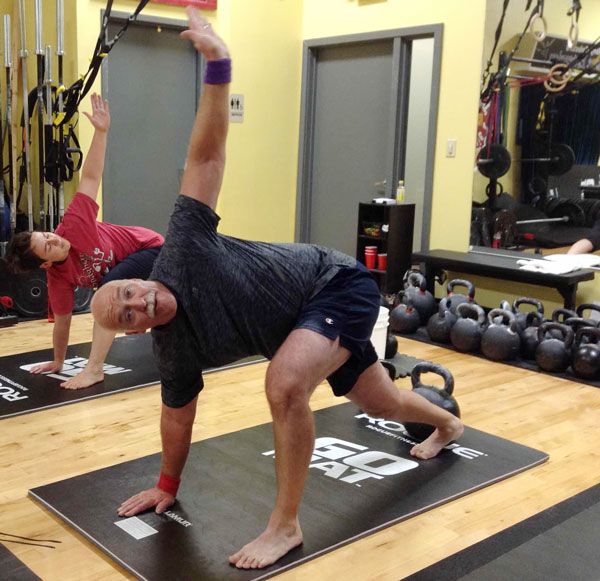
An Example Close to Home:
Before training with me and using the RKC system, my husband Al trained on his own or with his buddies. Three shoulder surgeries later—including two surgeries on one shoulder—I told him he needed to start training with me.
Now, he hasn’t had any more injuries and his shoulders are strong and stable. He consistently trains three days each week, and he improves in some way each session. Believe it or not, the strict press has become his strongest movement!
It isn’t easy to coach your own spouse, but it is a joy to watch him to lift while moving with ease and strength—especially since he’s been pain and injury free for the past five years. We both hope to train with this system for the rest of our lives.
Kettlebell Training for Life
I could share a story about each of my students and how the RKC School of Strength has helped them achieve something in their lives that they never imagined—in and outside the gym. I’m sure you can too, if you use the RKC system.
It’s a privilege to train people with a system I’m confident in—and to use honorable, time-tested methods that make people better and more courageous athletes for life and sport, at every age.
Feel free to share your “kettlebells for life” story in the comments below.
***
Lori Crock, RKC Team Leader, FMS II and MovNat MCT II. Lori owns MoveStrong Kettlebells in Dublin, Ohio where she teaches small group kettlebell classes to all ages and fitness levels and continues to be amazed, inspired and educated by her students. Her email address is lori@movestrongkbs.com
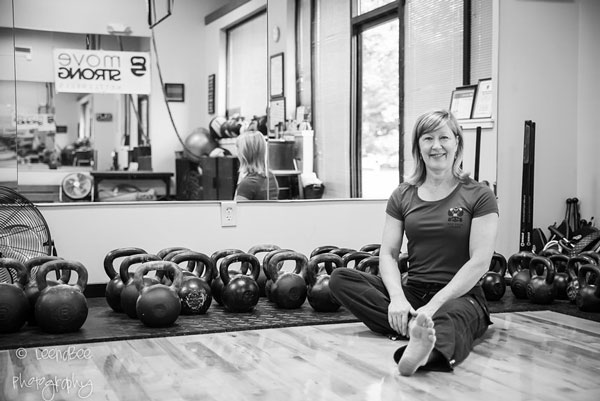
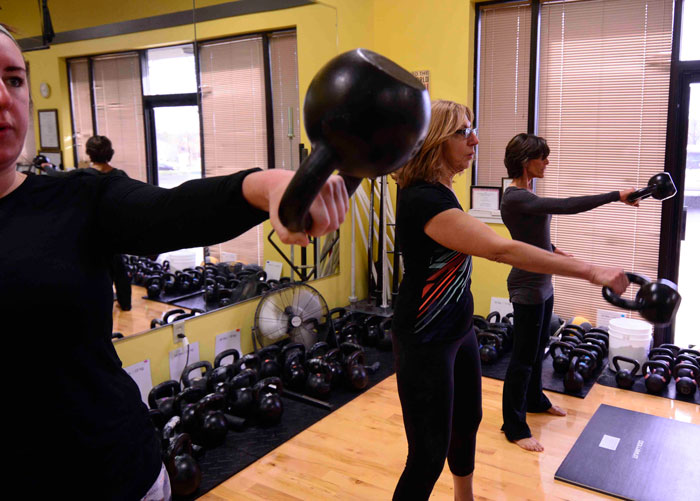
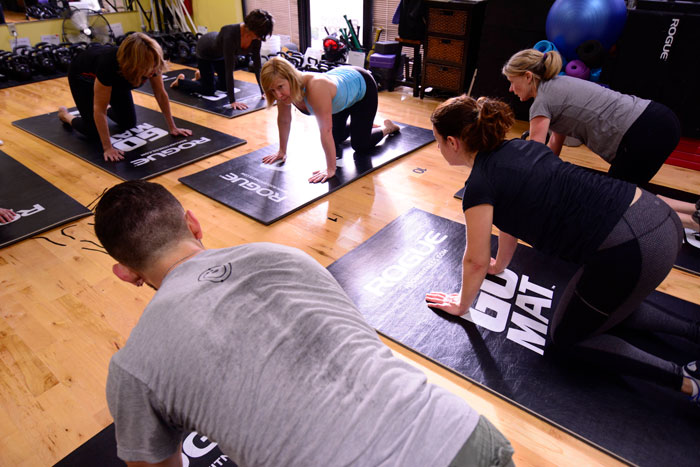
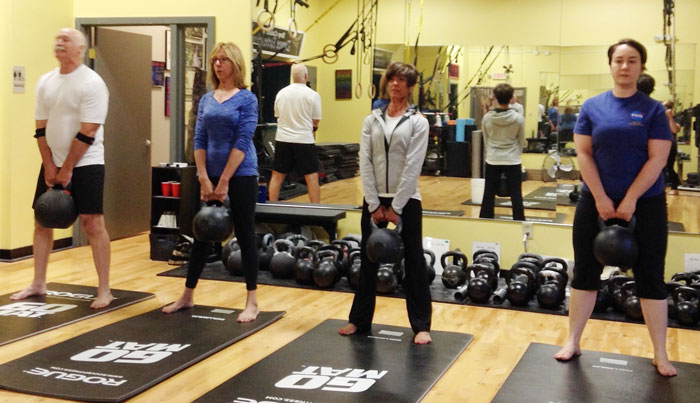
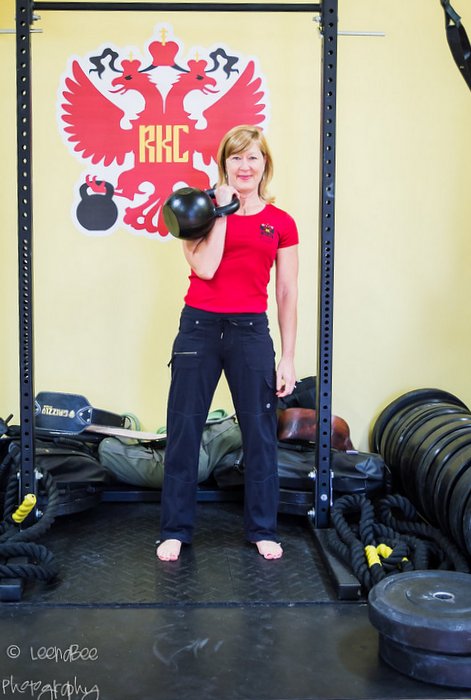
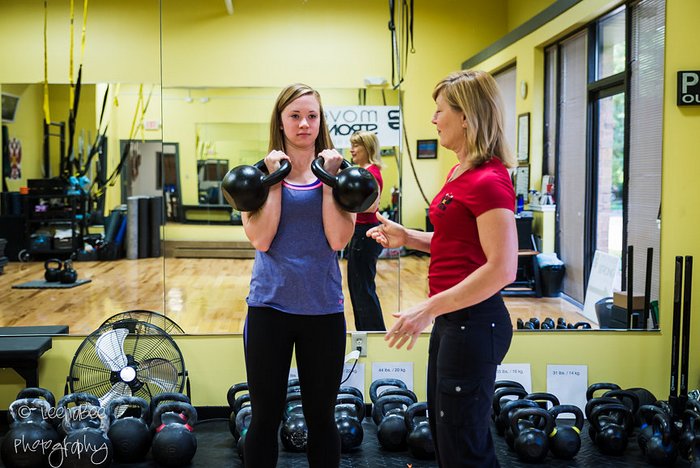
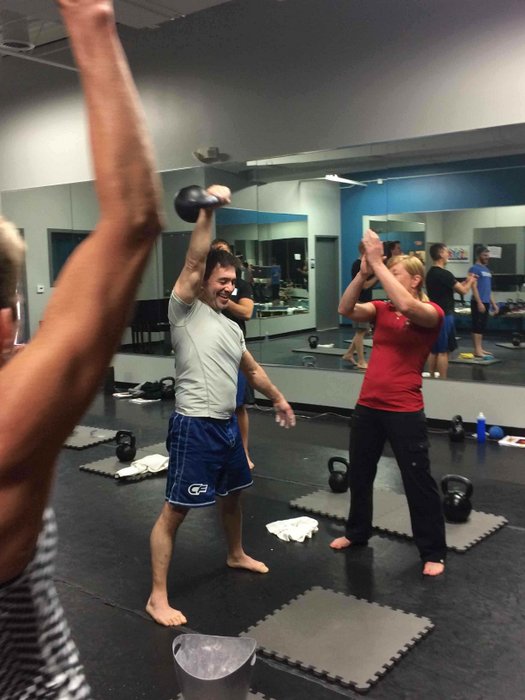
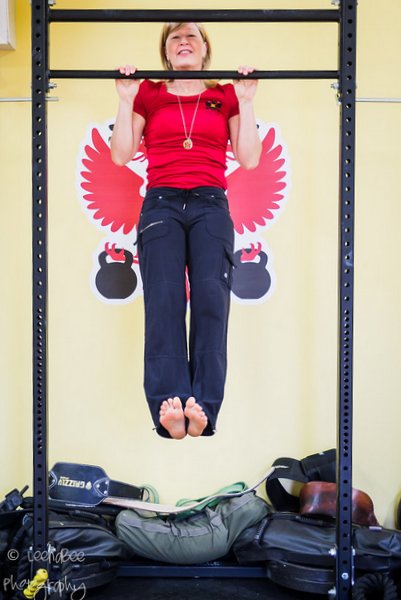
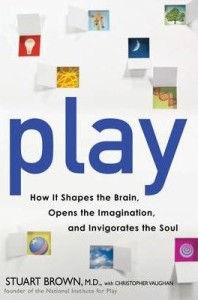 You can encourage creativity by using different fitness tools and combinations of movements that feel physically and mentally freeing, while still conditioning and challenging the body and the mind.
You can encourage creativity by using different fitness tools and combinations of movements that feel physically and mentally freeing, while still conditioning and challenging the body and the mind.